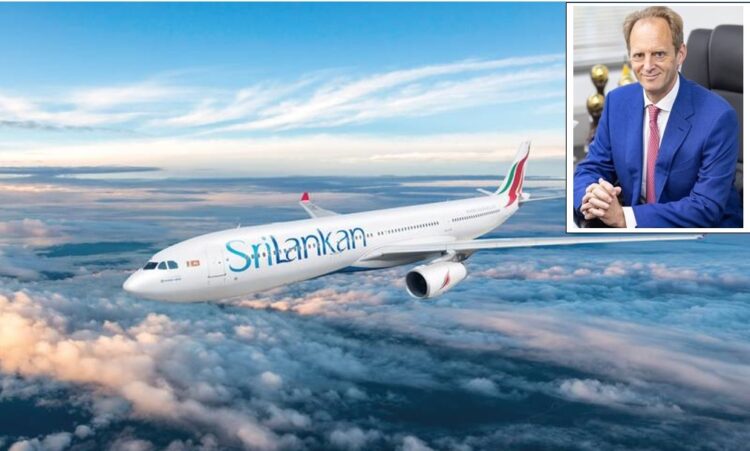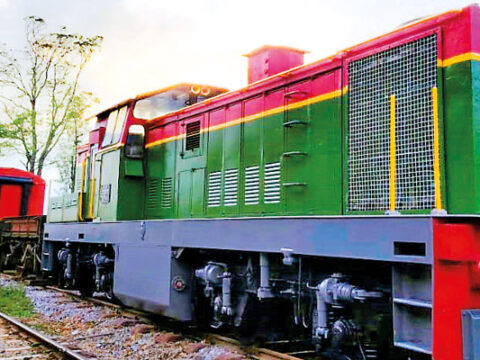ABU DHABI: SriLankan Airlines should be a target for takeover by carriers in the Gulf once it is privatised, after making an operating profit for the first time in 15 years, its chief executive has told The National.
Richard Nuttall also suggested that Gulf operators could substantially benefit from the airline’s easy access to its Asian neighbour. “The big prize for everybody is India,” he said.
He suggested that Emirates, which previously owned 40 per cent of SriLankan, might be among those carriers who respond to the Colombo government’s wish to privatise the airline.
It was part-owned by Emirates for 10 years until the Sri Lankan government bought all the airline’s shares in 2008. In that year SriLankan made a profit of nearly $30 million but under government administration over the next seven years it lost $875 million.
Asked if the Dubai-based airline was among likely bidders Mr Nuttall said he could not “speak for either Emirates or anybody else in the Gulf” but the government’s plan was “to look for expressions of interest in the coming months and they want to do that fast”.
SriLankan has been severely impacted by a triple hit: the collapse in tourism during the Covid-19 pandemic, the 2019 Isis-co-ordinated Easter suicide bombings and last year’s financial ructions.
Despite the turmoil Mr Nuttall, who has worked for eight airlines, has taken the company into an operating profit that could have been significant if not for the large debts he inherited.
“Essentially, on a $1 billion turnover the business made $100 million profit,” he said. “But we then had to pay almost all our profit on finance charges. But the essential thing that we’ve got here is an airline that works and over time should definitely make money.”
The profit means that for the first time since it was managed by Emirates in 2008 it has not been in the red.
Income could be further enhanced with an ambition to double the fleet from 23 aircraft to 40 in the next three to five years.
Significant rewards then await with the India market a vastly untapped resource, argued the 57-year-old chief executive from Yorkshire, England.
“The big prize for everybody is India,” he said speaking at his office in Colombo. “If you work with us then you start being relevant to the Indian market in all directions. So, I think that’s the big interest for the Gulf carriers.”
Despite being the world’s most populous nation of 1.4 billion, India has just 0.5 commercial aircraft per million people whereas China has three and American 30.
With the wait for new commercial aircraft stretching to five years, having a partnership with a major airline would bring significant benefits to help exploit the vast India market.
“We are right next door to the most populous country in the world,” Mr Nuttal said. “If we get an airline investment then that can help us with buying power or assistance with expertise in certain areas.”
:quality(70)/cloudfront-eu-central-1.images.arcpublishing.com/thenational/PI4AC3YA4FDQRO66TNWUUGQEUU.jpg)
While Gulf buyers are a possibility, Indian media have also reported that the major industrial conglomerate Tata Enterprises is a potential investor after its recent purchase of Indian Airlines.
Mr Nuttall, who has previously worked for Saudi Airlines and Royal Jordanian, suggested the alliance could be a useful fit given Sri Lanka’s proximity to India and its understanding of its culture. The airline also serves 14 Indian cities.
He said Sri Lanka, with its vast unspoilt shoreline, was “the closest international friendly beach to India by a long way”.
The airline would also offer a Gulf carrier a significant hub in southern Asia for onward flights to China, Australia and south-east Asia.
Mr Nuttall pointed out that customers in India who wish to fly east currently have to “backhaul” three or four hours to the major hubs of Mumbai or Delhi on the west coast before heading eastward again.
“Essentially we give you a hub in the south-east so you become more relevant in more directions for more cities.”
Last year Sri Lanka’s newly appointed prime minister Ranil Wickremesinghe pledged to privatise the airline as it was still making a loss.
“Even if we privatise SriLankan Airlines, this is a loss that we must bear, even by the poor people of this country who have never stepped on an aeroplane,” he said.
However, in a meeting this year SriLankan Airlines chairman Ashok Pathirage said in the past three years “we have not received any money from the Treasury, we did not take even one dollar”.
It is understood that the government will decide on privatisation steps in the coming year.
The main revenue sources for SriLankan are the country’s significant diaspora in the UK, Australia and the Middle East, as well as the Indian market.
It also has the major attraction that the airline’s host country is as a tourist destination unspoilt by major development and with a very welcoming population.
“I’ve never had anywhere where so many people have said, ‘Wow, the best holiday I ever had was in Sri Lanka,’” said Mr Nuttall, who is married with two teenage children. “The people here are interested, they smile, making it so much more personable with much more human interaction that elsewhere.”
The new Sri Lankan government wants him to regrow the airline to pre-Covid levels “and then see what a potential buyer might want beyond that”.
While it flies to 126 destinations in 61 countries, including direct routes to Melbourne, London and Dubai, Mr Nuttall is looking to have three daily flights to top Gulf and European destinations.
Part of the expansion plans are also to build a new terminal in Colombo, allowing the airport to double passenger numbers.
“If we have more frequency, then we’re a stronger product and we can stimulate more tourism,” Mr Nuttall said.
This he hopes could get the country back to its 2018 numbers of three million visitors a year.
Emirates airlines declined to comment.




